Air compressors are essential tools in various applications, from powering tools in workshops to driving machinery in industrial operations. Their versatility and reliability make them indispensable in many fields. However, like any equipment, air compressors can encounter issues, and one of the most common problems is leakage.
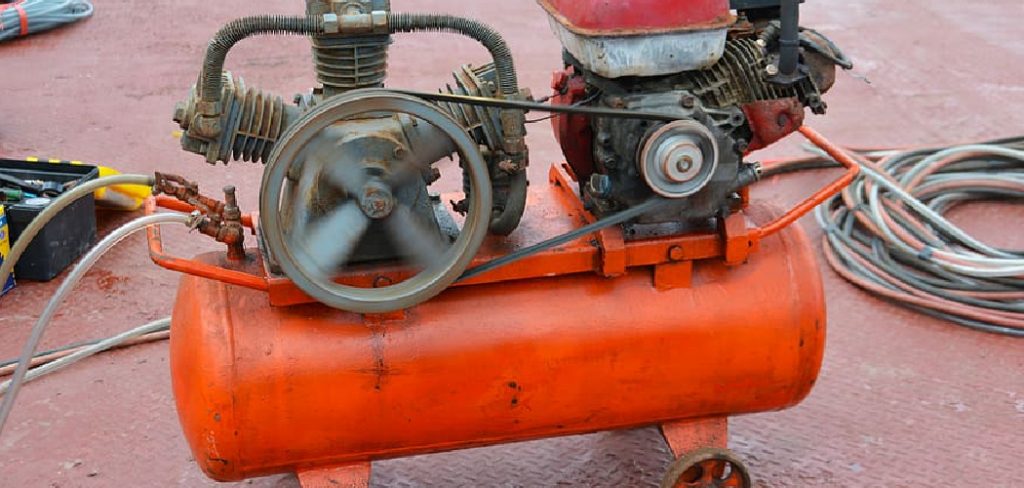
A leaky air compressor can significantly impact performance, leading to reduced efficiency, increased energy consumption, and a shorter lifespan for the unit. Understanding how to fix a leaky air compressor is crucial to maintaining its functionality and preventing costly damage over time.
This guide will walk you through the steps to accurately identify and fix air compressor leaks. We’ll cover detecting leaks, understanding their common causes, and effective repair methods, ensuring your air compressor operates efficiently and cost-effectively. Addressing these issues promptly can maximize your equipment’s performance and longevity.
Understanding the Causes of Air Compressor Leaks
Air compressor leaks can stem from a variety of sources, each requiring careful attention to properly identify and address. Understanding these causes is key to ensuring efficient operation and durable repairs.
Loose Connections
Over time, the constant vibrations generated during air compressor operation can gradually loosen fittings and connections. This can create small gaps where air escapes, leading to decreased efficiency. Regularly inspecting and tightening fittings can prevent this issue.
Damaged Seals or Gaskets
Seals and gaskets are critical components that maintain airtight integrity. However, wear and tear from extended use or improper installation can cause these parts to degrade. When seals or gaskets fail, air leaks become inevitable, so replacing them promptly is essential.
Cracks in Hoses or Tanks
Hoses and tanks are subjected to high pressure and varying temperatures, which can cause cracks or splits over time. These structural vulnerabilities not only lead to leaks but can also pose safety risks. Frequent inspections can help catch these issues early.
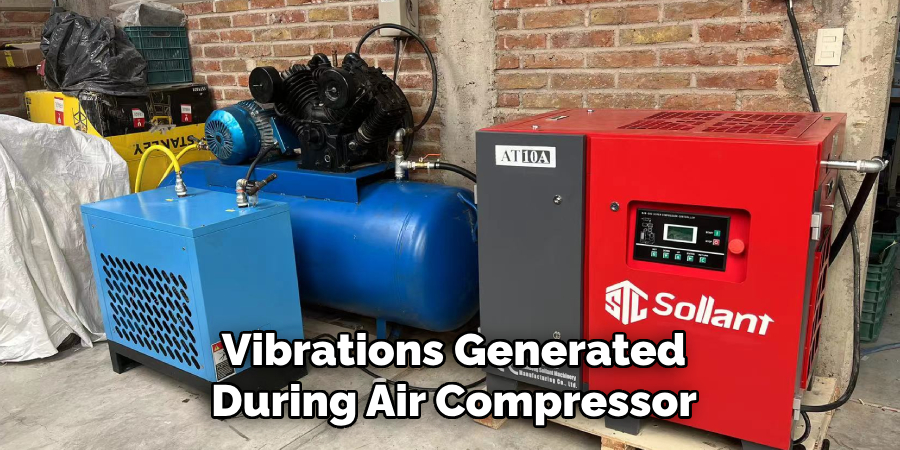
Valve Malfunctions
Faulty drains or check valves can also result in leaks. These valves regulate airflow, and when they become damaged or clogged, air can escape unnecessarily. Replacing or cleaning malfunctioning valves will help restore proper performance.
Improper Maintenance
Neglected maintenance accelerates wear and increases the likelihood of leaks. Dirt, debris, and insufficient lubrication can all contribute to premature part failure. A proactive maintenance routine minimizes leaks and prolongs the compressor’s lifespan.
Tip: Identifying the root cause of a leak is crucial for implementing long-lasting repairs and preventing recurring issues.
Tools and Materials Needed
Basic Tools
Wrenches, screwdrivers, and pliers are essential for loosening and tightening connections. These versatile tools allow for properly disassembling and reassembling compressor parts during leak repairs.
Leak Detection Supplies
To accurately locate leaks, a soap-water solution or an ultrasonic leak detector is invaluable. These tools help pinpoint problem areas quickly and efficiently.
Repair Materials
Keep replacement gaskets, seals, or Teflon tape on hand to address damaged components. For cracks or breaks, high-quality epoxy or tank repair kits are effective in creating durable fixes.
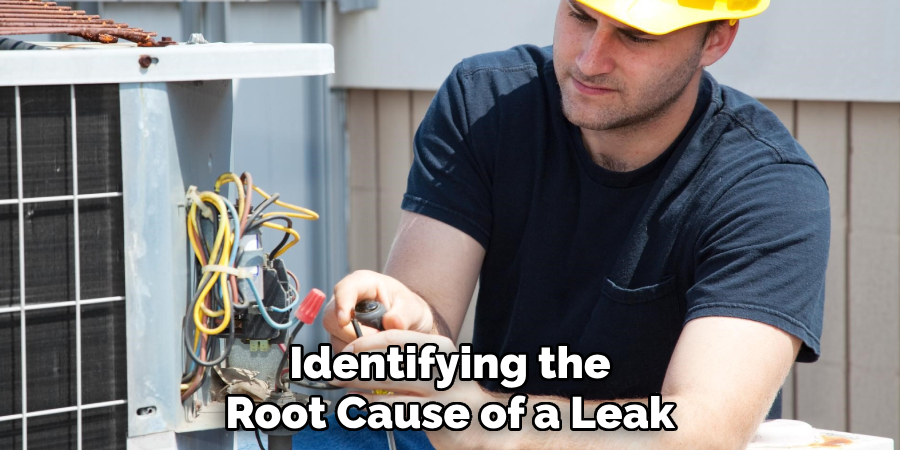
Safety Equipment
Safety goggles and gloves are vital for protection during repairs, particularly when working with pressurized systems. These items safeguard against accidents and ensure a safer work environment.
Tip: Having the right tools not only speeds up the repair process but also enhances safety and the quality of your work.
Detecting Air Compressor Leaks
Air compressor leaks can lead to inefficiencies, increased energy costs, and reduced system performance. Detecting leaks promptly is essential to maintain optimal functionality. Here are four methods to identify air compressor leaks effectively:
Method 1: Visual Inspection
Begin by conducting a thorough visual inspection of the air compressor system. Look for visible signs of damage, such as cracks, wear, or oil stains near connections, fittings, and hoses. These physical indicators often signal areas where leaks may occur.
Method 2: Soap-Water Solution
A simple and effective method for identifying leaks involves using a soap-water solution. Apply the mixture to potential leak points, such as joints or seals, and observe the area closely. If bubbles form, it indicates air is escaping through a leak.
Method 3: Ultrasonic Leak Detector
For a more advanced approach, use an ultrasonic leak detector. This device identifies high-frequency sound waves produced by escaping air, making it easier to pinpoint leaks even in less obvious locations. It is particularly beneficial for complex systems or hard-to-reach areas.
Method 4: Listen for Hissing Sounds
If specialized tools are unavailable, a quiet environment can help. Turn off ancillary equipment and listen carefully for hissing noises, which often signify escaping air. While less precise, this method can be helpful for preliminary leak detection.
Tip: Incorporate regular leak detection as part of your maintenance routine to prevent minor leaks from escalating into significant issues. Early detection not only saves energy but also extends the lifespan of your air compressor system.
How to Fix a Leaky Air Compressor: Fixing Common Air Compressor Leaks
Addressing air compressor leaks promptly is crucial to maintaining an efficient and reliable system. Below are steps to fix common types of leaks effectively:
Loose Fittings
Loose fittings are a frequent cause of air loss. Use a wrench to tighten all loose connections securely. For threaded connections, apply Teflon tape to the threads to ensure a proper and airtight seal.
Worn Seals and Gaskets
Over time, seals and gaskets can wear out, causing leaks. To fix this issue, first, remove the damaged seal or gasket carefully. Replace it with a new one that matches your air compressor model, ensuring it is installed correctly for optimal performance.
Cracked Hoses
Air hoses can crack due to wear and tear or exposure to harsh conditions. Locate the damaged section of the hose and replace it entirely if necessary. Alternatively, you can cut out the damaged portion and reconnect the ends securely using hose clamps.
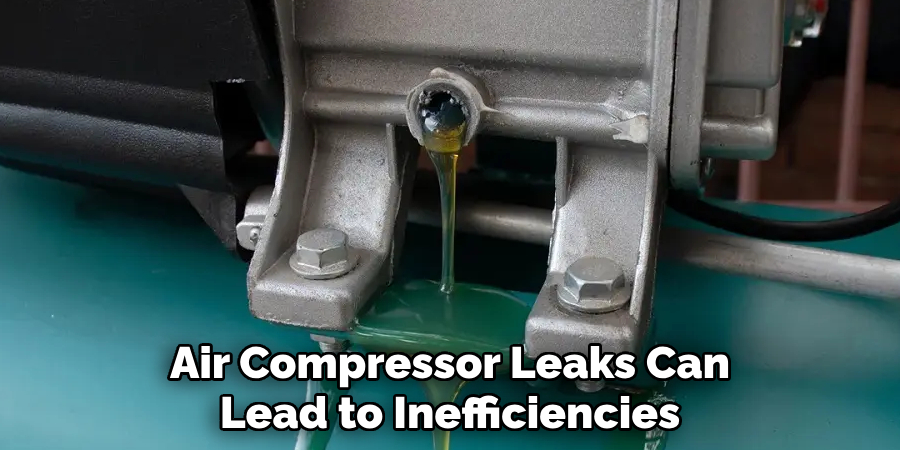
Leaky Drain Valve
A faulty drain valve can slowly release air, leading to inefficiency. To resolve this, try tightening the valve firmly. If the leak persists, replace the drain valve with a new one to eliminate air loss completely.
Punctured Tank
A punctured tank is a serious issue that requires immediate attention. Begin by cleaning the damaged area thoroughly. Use a tank repair kit or high-quality epoxy to seal the puncture. If the tank damage is extensive or cannot be repaired safely, consider replacing the tank altogether.
Tip: Always depressurize your air compressor tank before attempting any repairs to avoid injuries or further damage. Regular maintenance and inspections can help prevent these issues from occurring in the first place.
Preventive Maintenance to Avoid Future Leaks
Regular maintenance is key to ensuring the longevity and efficiency of your air compressor. Below are some steps you can take to prevent future leaks:
Regular Inspections
Periodically check your air compressor for wear, loose fittings, or any signs of leaks. Addressing small issues early can prevent them from turning into larger problems.
Maintain Proper Pressure Levels
Always operate your air compressor within the recommended pressure range. Exceeding the pressure limit places undue strain on components and increases the likelihood of leaks.
Lubricate Moving Parts
Ensure all moving parts are well-lubricated to reduce friction and wear. Proper lubrication protects the compressor’s internal mechanisms and enhances its performance.
Replace Worn Components Promptly
Inspect gaskets, seals, and hoses regularly, replacing any that show signs of wear before they fail. This proactive measure keeps your compressor running smoothly and prevents sudden breakdowns.
Drain the Tank Regularly
Moisture buildup in the tank can lead to rust and internal damage. Open the drain valve after every use to remove accumulated water and extend the life of the tank.
Tip: Consistent maintenance not only extends the life of your air compressor but also reduces costly repairs and downtime. By incorporating these habits, you can ensure safe and efficient operation for years to come.
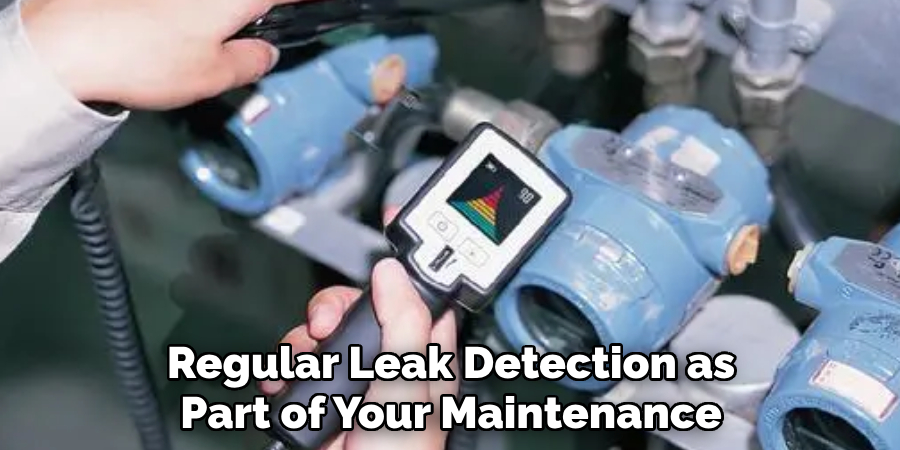
When to Seek Professional Help
Understanding when to seek professional help is vital to maintaining the performance and safety of your air compressor.
Severe Tank Damage
If the tank exhibits multiple cracks or significant structural issues, it’s imperative to contact a professional technician. Attempting to repair such severe damage on your own could compromise the safety and integrity of the compressor.
Persistent Leaks
Persistent leaks that remain unresolved despite your best repair efforts warrant expert assistance. Leaks can indicate hidden issues that require specialized tools and knowledge to address effectively.
Motor or Valve Issues
Complex components, such as the motor, regulator, or valves, can present challenges for untrained individuals. If the source of a leak or malfunction involves these parts, consult a qualified technician to ensure accurate diagnosis and repair.
Specialized Equipment
Industrial-grade air compressors often require advanced skills and equipment for maintenance and repairs. Relying on a professional service ensures that these large-capacity units remain operational and efficient.
Tip: Investing in professional repairs guarantees safety, helps maintain optimal performance, and extends the lifespan of your compressor. By recognizing when expert help is needed, you can avoid unnecessary risks and costly replacements.
Safety Considerations While Fixing Leaks
When addressing leaks in an air compressor, adherence to safety measures is essential to protect yourself and maintain equipment integrity.
Depressurize the System
Always release pressure from the compressor tank before initiating any repairs. Pressurized air can be extremely dangerous, leading to potential accidents if released suddenly.
Wear Protective Gear
To minimize the risk of injury, wear gloves and safety goggles. These protect against exposure to sharp components, hot surfaces, or the sudden release of pressurized air.
Handle Chemicals Carefully
If using epoxy, sealants, or repair kits that involve chemicals, follow the product instructions meticulously. Incorrect handling can lead to ineffective repairs or hazardous situations.
Avoid Temporary Fixes
While quick solutions like duct tape may seem convenient, they are unreliable under an air compressor’s high pressures. These makeshift fixes can fail unexpectedly, causing further damage or safety risks.
Tip: Prioritize safety at every step of the repair process. By taking proper precautions, you not only prevent accidents but also ensure that repairs are effective and durable. Safety-first practices contribute to a long-lasting, well-maintained air compressor.
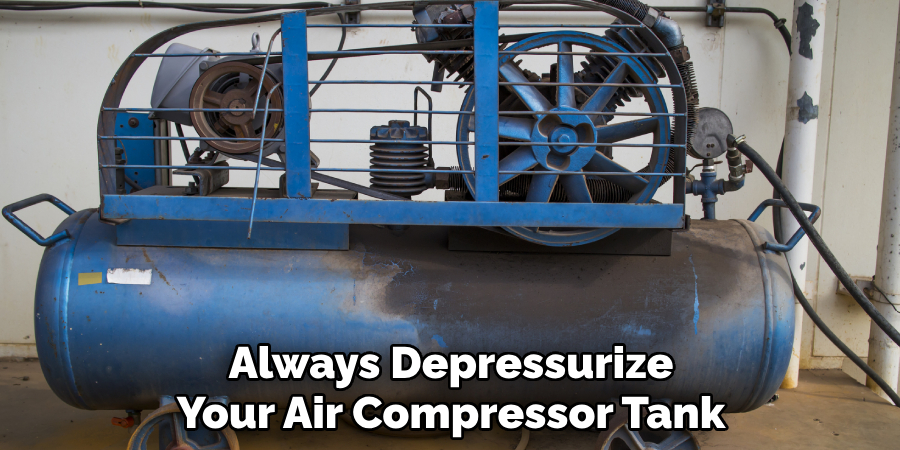
Conclusion
Addressing air compressor leaks is essential for enhancing efficiency and ensuring your equipment’s longevity. Identifying leaks early, using methods like soap-water solutions, and repairing or replacing damaged components are critical steps in maintaining optimal performance.
Regular preventive maintenance reduces the likelihood of future issues, keeping your compressor reliable and cost-effective. When tackling severe or complex problems, don’t hesitate to seek professional assistance. By following these best practices and understanding “how to fix a leaky air compressor,” you can ensure your air compressor remains a dependable tool for both home and professional applications.
